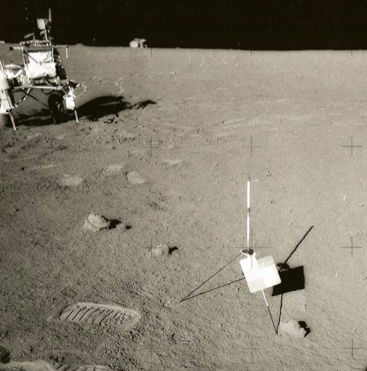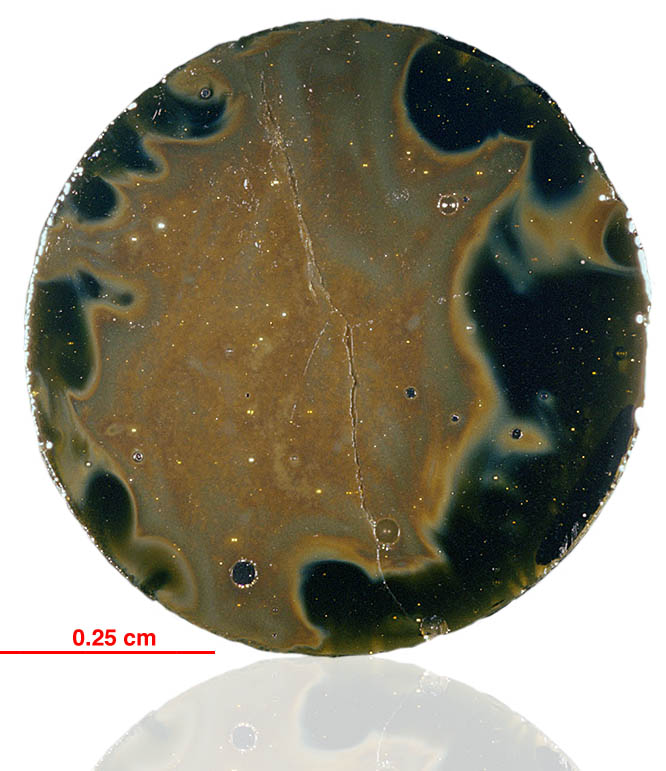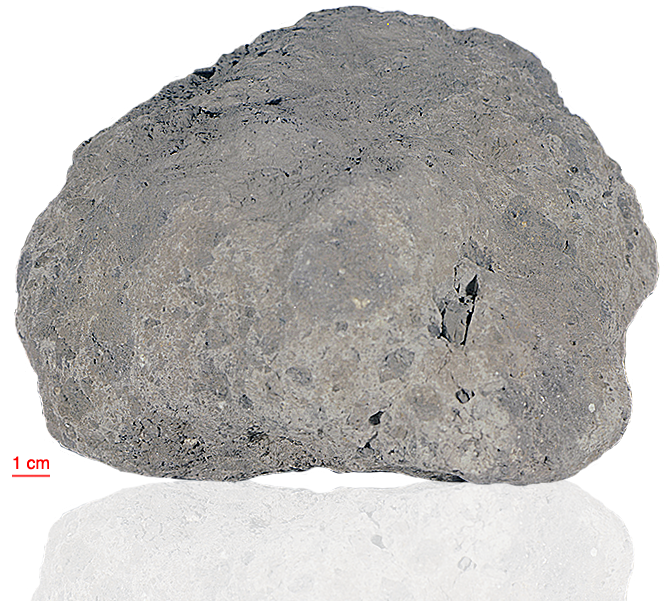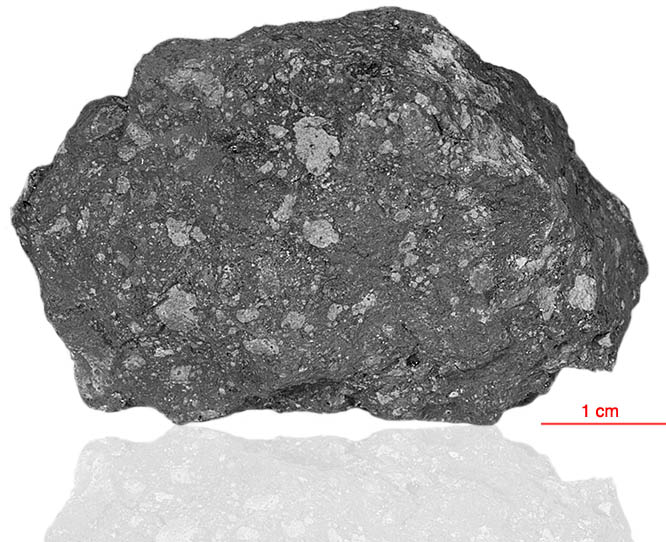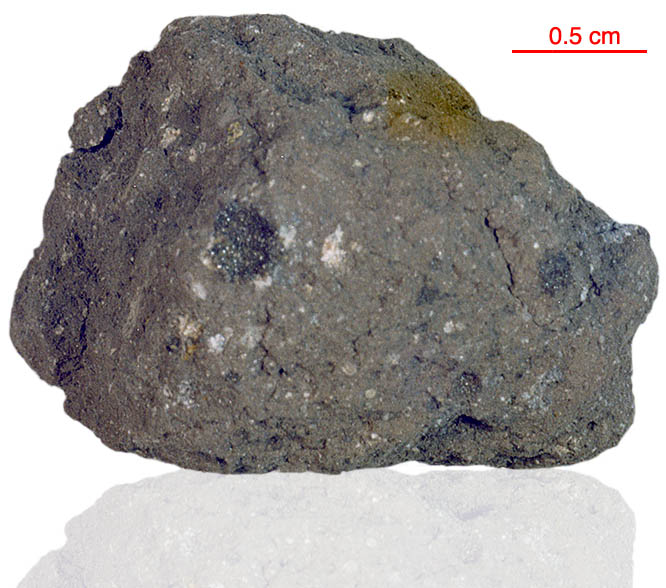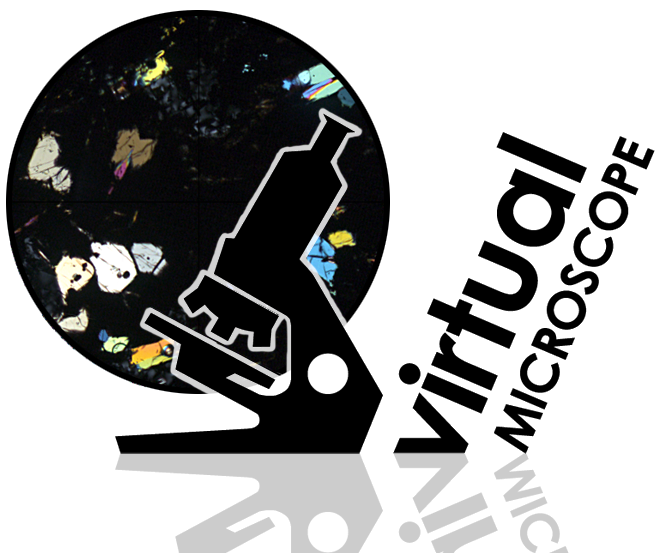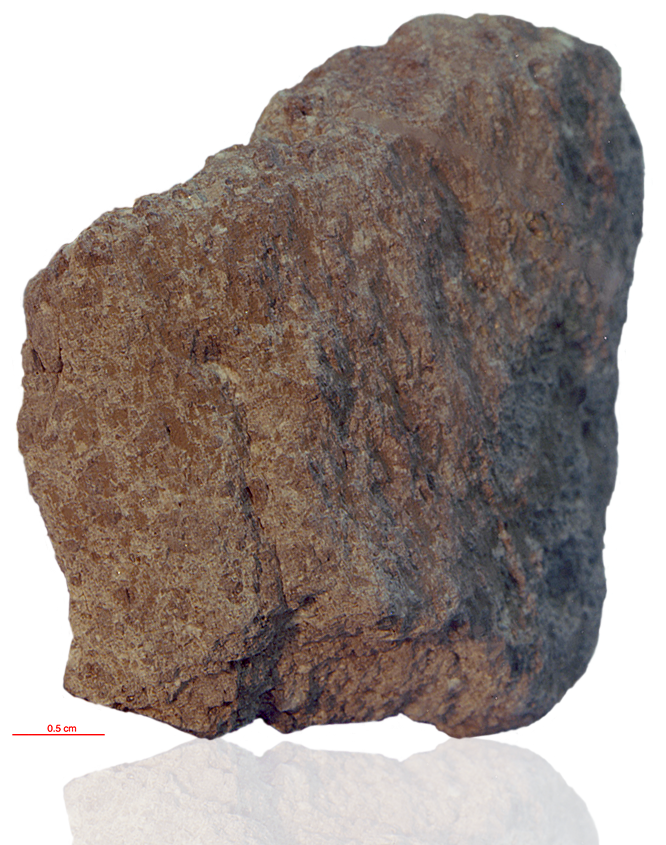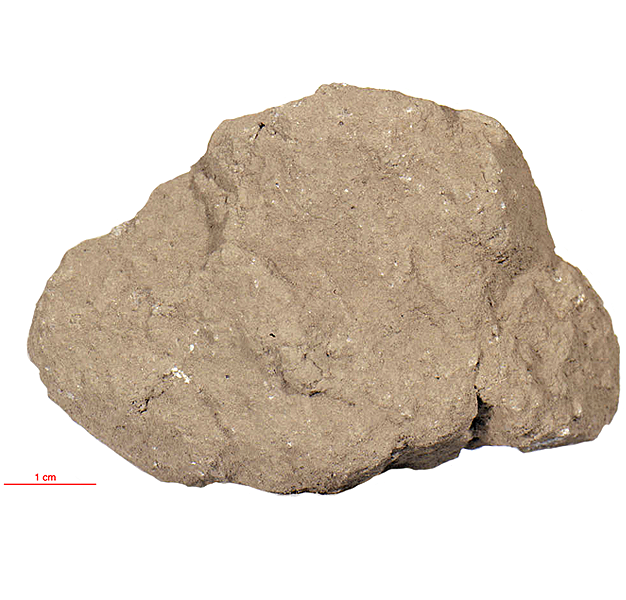
Fact sheet
Samples 14041–14046 are fragments from a fractured clod that broke apart when it was collected. 14045 is a blocky, subangular rock with a rough, hackly surface. Glass-lined zap pits occur on all but one surface. The sample is a friable, fine-grained clastic rock with very sparse sub-angular light-colored clasts in a medium-grey matrix.
The sample weighed 65.2 grams before analysis. It has not been dated.
Our thin section contains many fragments of irregularly-shaped glass of variable colour and composition. A large (0.3 mm) spherical glass globule can be seen in rotation 1. Throughout the section small fragments of anorthositic material are commonly found (see rotation 2 for one of them.
Further details of this and other Apollo samples are here: http://curator.jsc.nasa.gov/lunar/
The Apollo 14 landing site was in a region formed by impact-basin debris.
Most of the 42 kilograms of rocks and soil collected on Apollo 14 are breccias (rocks that are composed of fragments of other, older rocks). In some cases, the rock fragments that form a breccia are themselves breccias. Such rocks obviously have experienced complex histories with multiple generations of impact events. Some breccias were heated enough that some of the material in the rock was melted.
Apollo 14 was launched on 31 January 1971.
